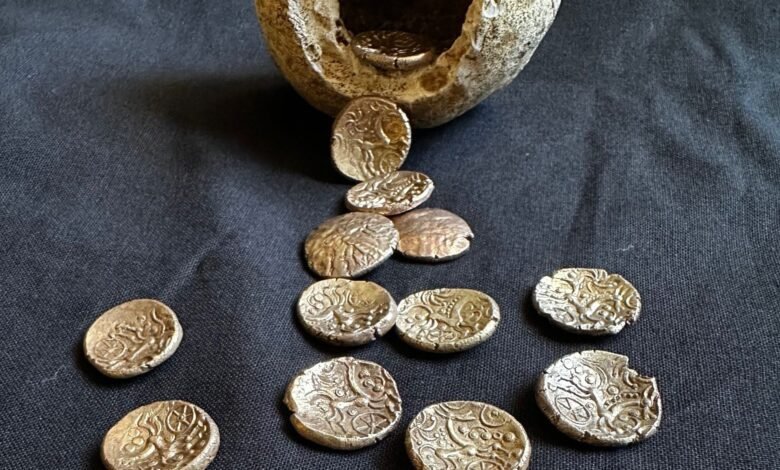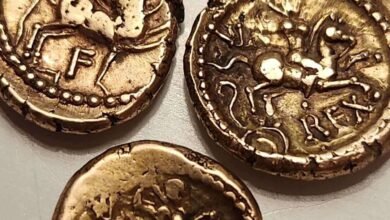2022 was a record year for treasure and antique finds, with more than 50,000 finds reported

A grim medieval reminder that death awaits us all, an intricately carved ivory pearl depicting a pretty young woman on one side and a skull on the other is among the star objects in a record year for treasures and archaeology, according to a report Finds unveiled today (January 23) at the British Museum.
The bead may have come from a rosary broken more than 500 years ago and was found by Caroline Nunnery, a licensed Thames mud finder who took up the hobby while recovering from illness and regularly travels from her home in Brighton to visit at low tide to search the muddy foreshores. Nunnery’s find joins 53,490 other objects added to the database maintained by the British Museum in 2022. Most of these were voluntarily reported by metal detectorists under the Portable Antiquities Scheme (PAS). Finds reported under the program, which has now recorded nearly 1.7 million objects, have helped identify thousands of previously unknown objects at prehistoric, Roman and medieval sites.
Some finds have been officially defined as treasures that must be reported to a coroner under the Treasure Act (passed in 1996 and updated last year to include base metal finds of exceptional historical interest).
The haul includes a 3,000-year-old gold dress clasp found by detectorist Jonathan Needham in Staffordshire while searching for metal in farmland. British Museum scholar Laura Perucchetti and curator of Early Europe Neil Wilkin confirmed that it was either a luxury import from Ireland or was made by a skilled Irish goldsmith from a solid piece of metal with raised tapered ends. It is one of only seven examples of this species found in England and Wales and is now likely to be acquired by a local museum, with the landowner and Needham sharing a reward.
A prehistoric hollowed out flint full of gold coins with a horse motif was one of the most impressive finds of 2022 British Museum
Another find was a clever example of Iron Age upcycling: a football-shaped flint with a naturally hollow interior found at East Garston in West Berkshire, repurposed as a money box containing a hoard of tightly packed gold stater coins dating to between 50 and 20 BC, with the motif of a running horse.
Other such flint caches are known, including one from Westerham in Kent, which is already in the collection of the British Museum. Pippa Pearce, a senior conservator at the British Museum, says hoarded coins need to be carefully cleaned in the museum before their details can be read and their meaning understood: “Every coin is a miniature document.”
Mark Jones, interim director of the museum, says the institution is proud of its role in administering the PAS and the Treasure Act. “The information about finds is recorded by the PAS to increase knowledge about past peoples and their habitats and habits. “It reflects every part of human history, from the Palaeolithic to modern times, across England and Wales.” His strong support for the project is welcomed by the network of regional finds officers, as the project’s funding has been threatened on several occasions in the past.



